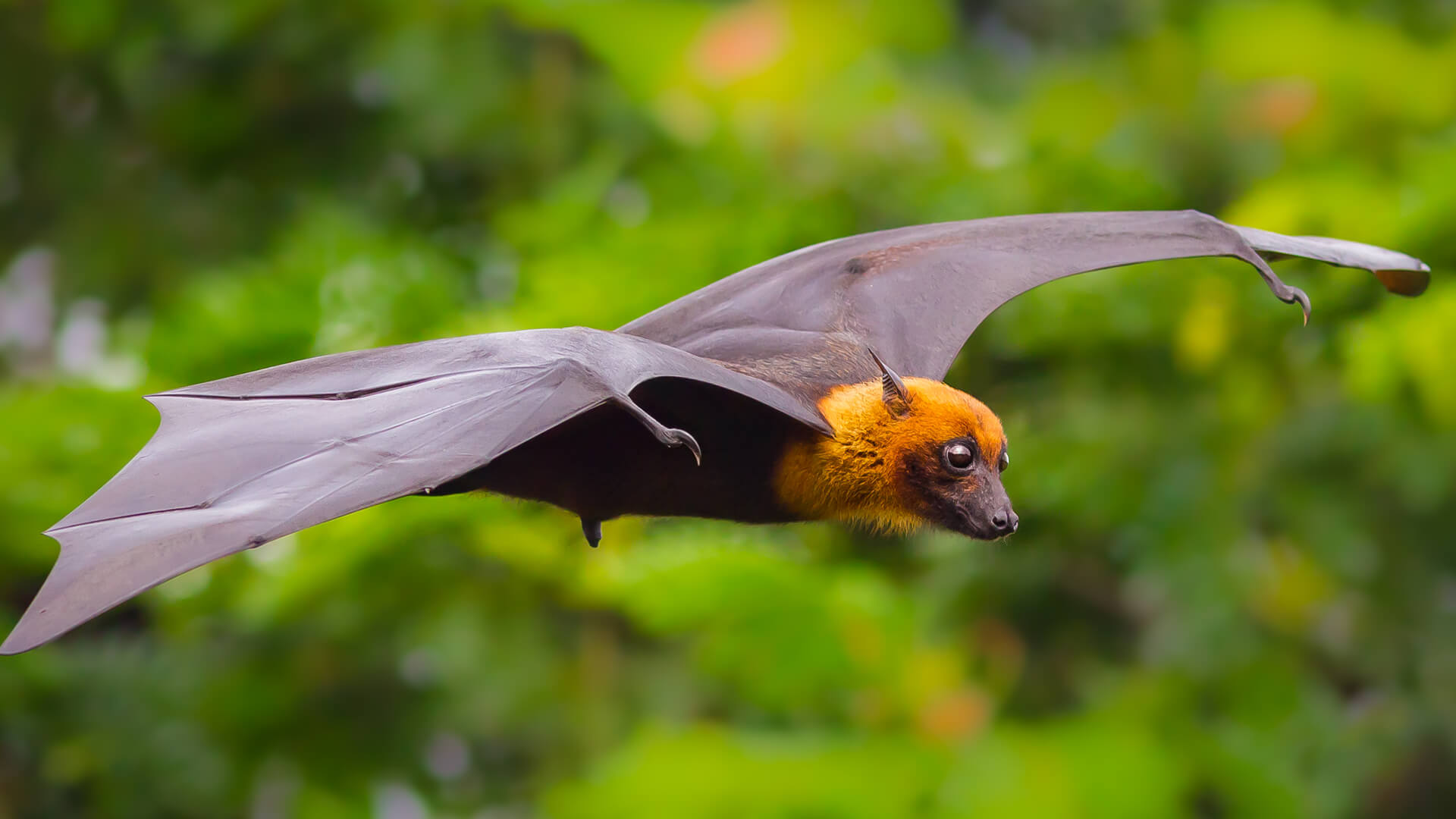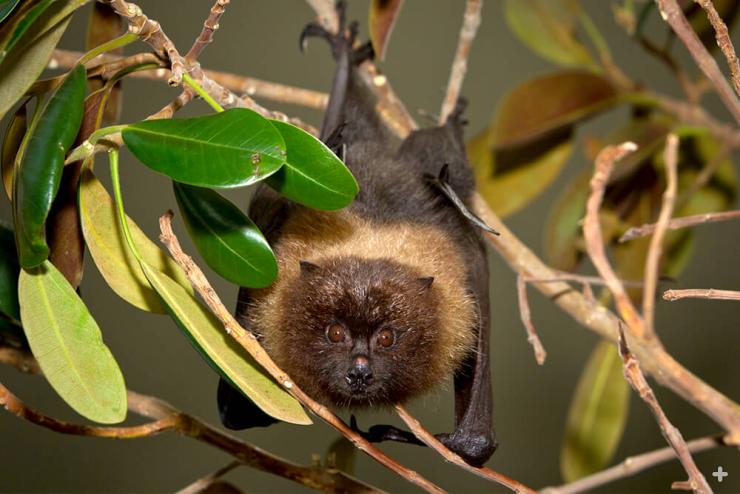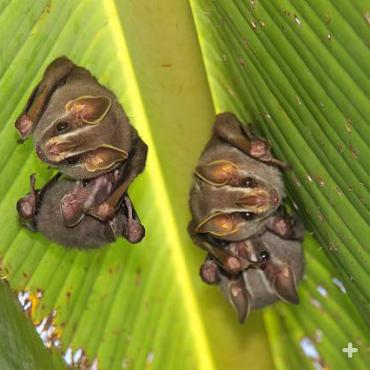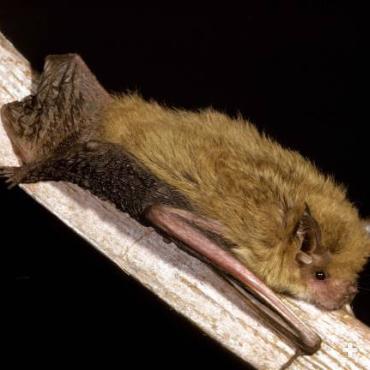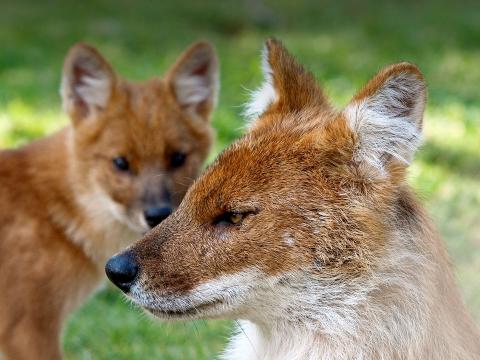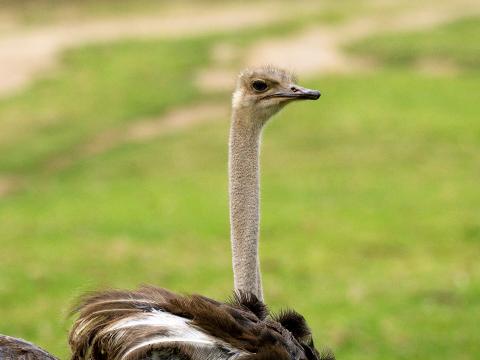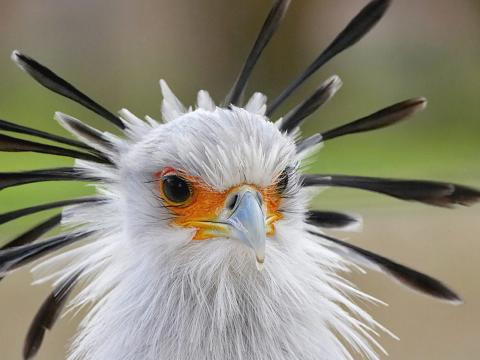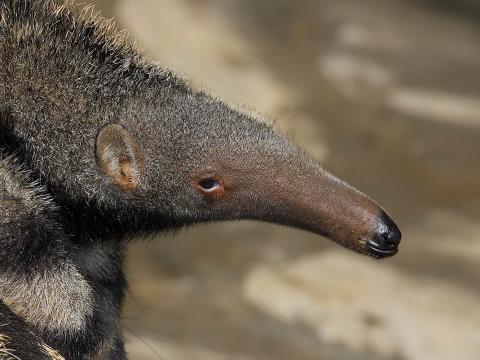Bat
- Class: Mammalia (Mammals)
- Order: Chiroptera
- Families: 19
- Genera: 187
- Species: 951
ABOUT
Bats are myth-understood. There may be more myths about bats than any other wildlife. Some people think bats are blind bloodsuckers that fly into your hair and carry rabies. In fact, these flying mammals are extremely useful to humans and are gentle, intelligent creatures. Out of nearly 1,000 bat species, only 3 feed on blood, and it is usually that of cattle. They belong to the taxonomic order Chiroptera, which means “hand wing.”

These flying mammals are divided into two major groups. Megachiroptera or mega bats are medium- to large-size bats. Many eat fruit, pollen, or nectar; some eat small land animals, and some eat fish. They have big eyes and excellent eyesight.
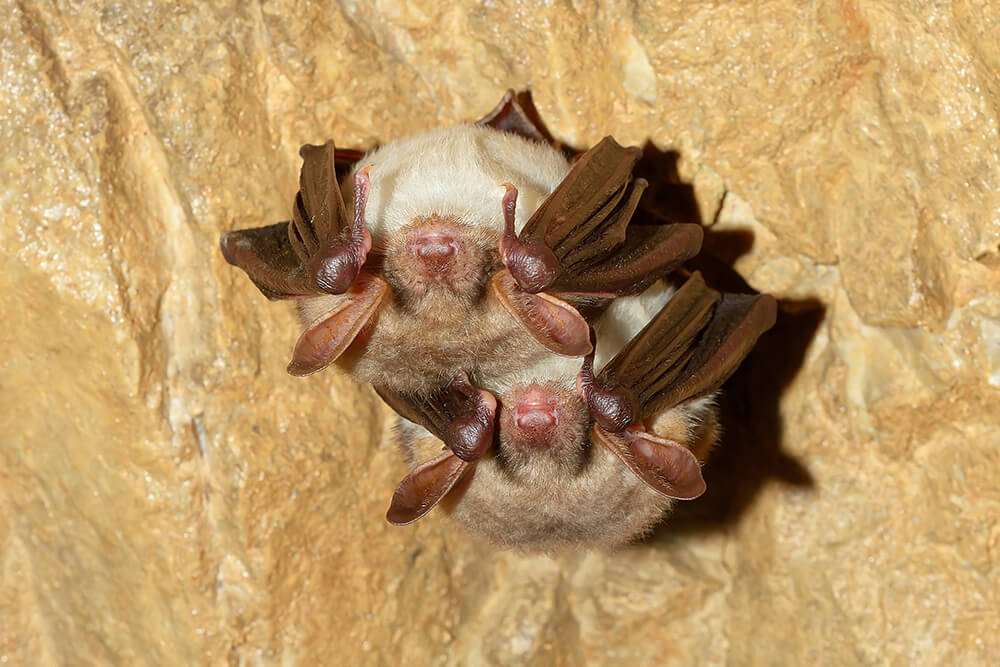
The other major group is Microchiroptera or micro bats, which are smaller bats that eat mostly insects. They use echolocation, detecting sound waves to navigate and identify the flying insects they eat. Included in this group is the smallest bat, the Kitti’s hog-nosed bat, which weighs less than a penny.
There are 47 bat species in the US, and 21 of the 23 in San Diego County are insectivorous; the other two eat nectar. San Diego County is home to the largest bat in North America, the Western mastiff bat, which has a wingspan of over 22 inches (56 centimeters). The hoary bat is the most common bat in the US and is even found in Hawaii. The Kitti’s hog-nosed or bumblebee bat of western Thailand and southeast Burma is considered the world’s smallest mammal.
Bats are the only mammals capable of true flight. Bat wings contain the same bones as a four-fingered human hand. Indeed, a bat’s wings ARE its hands. A thin, strong membrane of soft, velvety skin spreads across these bones, connecting them to the bat's back and legs, like the fabric and ribs of an umbrella. The thumb clings to surfaces when the bat alights.
The surface of a bat’s wings has small, sensitive bumps called Merkel cells. Each bump has a tiny hair in the center, allowing the bat to collect information about the air flowing over its wings so it can change the wing’s shape to fly more efficiently.
HABITAT AND DIET

Bats can be found almost anywhere, except in polar regions and extreme deserts. They usually rest in large social groups in caves, trees, and human-made structures such as bridges, but some types shelter in burrows, termite nests, or even in flowers or giant spiderwebs. Some bats migrate to warmer climates during the winter, while others hibernate. One kind of bat travels 2,400 miles (3,900 kilometers) each year! It is not yet known how bats navigate these long distances to find the same cave they used the year before.
Bats roost upside down, since the lightweight bones in their hind legs cannot support their body weight in an upright position. Their wings wrap around them like a cloak while they rest. Bats sleep during the day and go out at night in search of food. Bat wings are laden with blood vessels, which help them heal rapidly if injured.
Most bats take off by dropping from a hanging position, and many can’t take off from the ground. Bats land by slowing down until they stall and grabbing hold of a branch or other surface. Some bats perform a flip and then grab hold!
The micro bats use echolocation to find their insect meals. They are able to “see” their world and detect prey by emitting short bursts of high-pitched sounds that bounce off objects and return to the bat as echoes. Most bats delay emitting a second signal until they have received the echo from the first. Catching prey can cause momentary “blindness,” because the bat cannot speak with a full mouth. To avoid this problem, a number of bats squeak through their nose and have evolved a variety of elaborate nasal outgrowths that direct their squeaks.
Bat ears are huge, often five or more times the size of the head. Muscles within the ears contract and relax with the burst of sound, blocking the outgoing squeaks and receiving the echo. By interpreting the incoming signal, bats in flight can distinguish the difference in sound between a tree, your head, and a tasty grasshopper. Bats are not blind, but most have better night vision than day vision. They see in black, white, and shades of gray.
As fruit doesn’t fly, fruit bats lack complex echolocation. Instead, they rely on excellent eyesight and a good sense of smell to find their food.
What's for dinner?
Mother's milk— All bats live on milk from birth up to six months of age.
Insects— About 70 percent of all bats eat insects: flies, mosquitoes, beetles, and cockroaches. A colony of bats in Texas eats 500,000 pounds (226,796 kilograms) of mosquitoes nightly!
Nectar— Bats that eat nectar are like hummingbirds, with a long snout and tongue that allow them to lap up nectar as they hover. The hair on their body catches pollen and carries it from flower to flower. Many plants would not survive without bat pollinators.
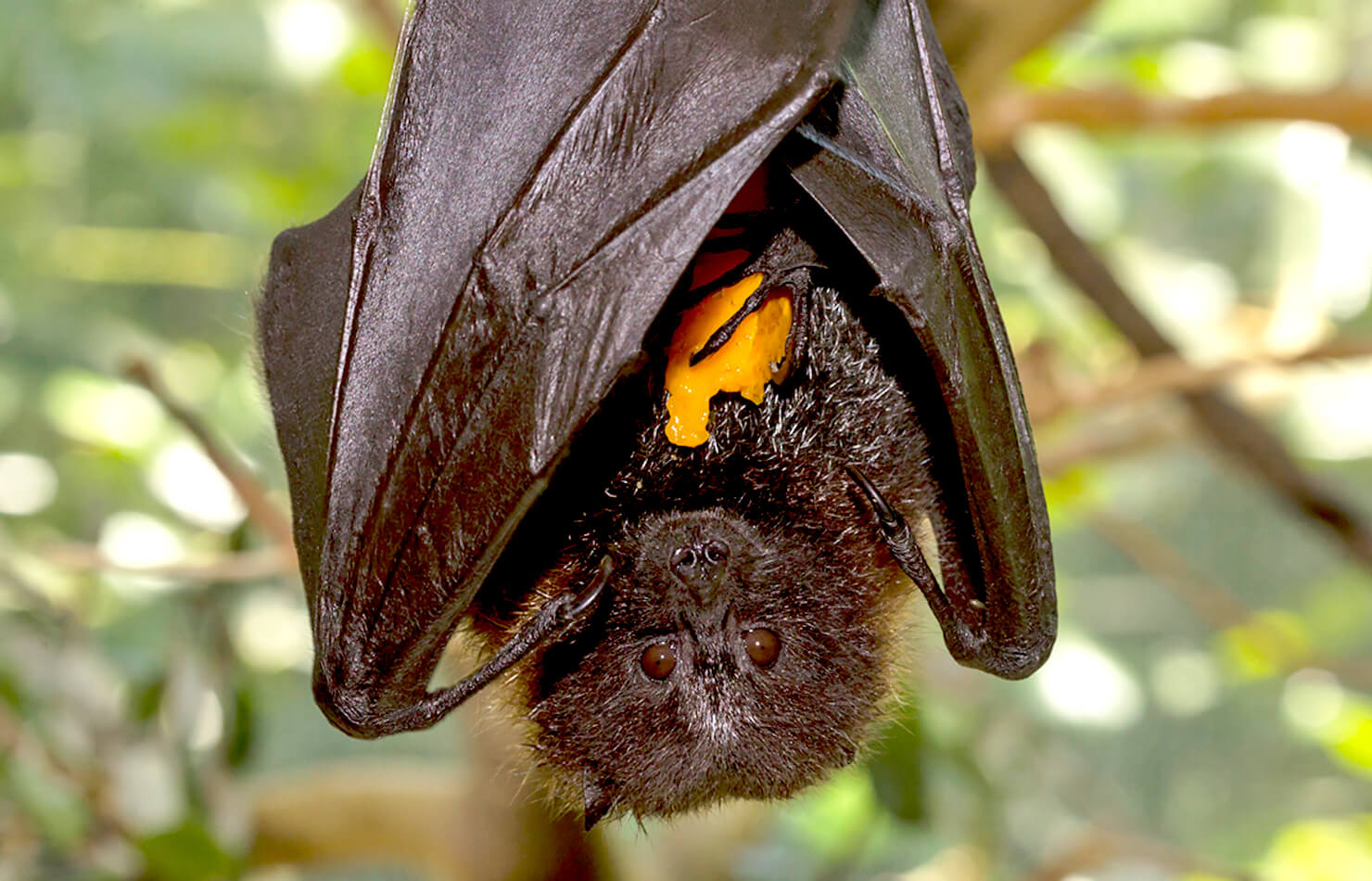
Fruit— Fruit eaters are drawn by the smell of ripe fruit. They don’t eat the whole fruit, though; they slurp up all the juice and spit out the pulp and seeds, which helps regenerate rainforests. Their seed-dispersing behavior has earned them the name “farmers of the tropics."
Fish, etc.— A few types of bats eat fish, plus lizards, frogs, birds, rodents, and even other bats! These bats kill their prey by biting its head. Fishing bats fly over the surface of the water, use echolocation to find the fish, grab it with their sharp claws, and move it into their mouth.
Blood— Only three species of bats, found from Mexico to South America, dine on the blood of mammals—often domestic cows—or birds. These bats make a small, V-shaped cut in the animal’s skin with a bite and then lick up the blood. They don’t suck blood, like the vampire legends say! And licking the blood from an animal’s leg is usually more annoying than dangerous.
A chemical in the bat’s saliva keeps the blood from clotting before the bat is done eating. This chemical could have medical uses for humans. Investigations are being done to see if it can help humans who have blood clots that could cause strokes.
FAMILY LIFE
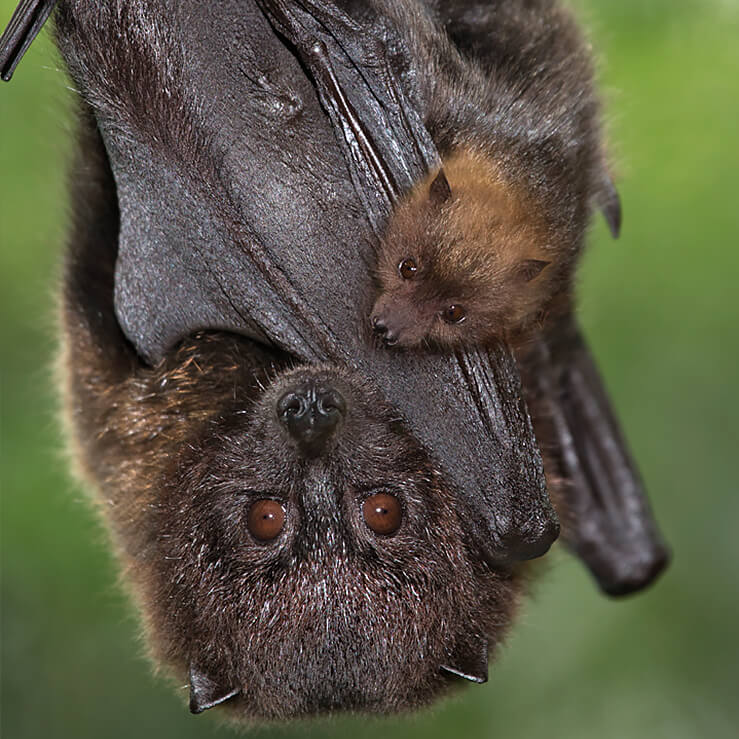
Male bats may sing, display their wings, or expand long hairs on the top of the head to attract a mate, depending on the species.
Many bats mark their territory using scent glands on their neck and chin. Bats are status grabbers, with dominant bats getting the prime, higher-up spots while lower-ranking and juvenile bats make do on the fringe.
A mother gives birth while hanging by her feet; she must catch her baby with her wings as it drops! Most female bats have only one baby, called a pup, per year, although twins and quadruplets occur in a few species. Some tropical bats can have two pregnancies per year. In some bat varieties, the pregnant females form nursery colonies in warmer roosts. A mother bat can locate her pup by its scent and sound out of millions in a roost!
The pup is born without hair and with its eyes closed. The mother nurses her pup for two to six months, then teaches it to fly and find food. The pup can cling to its mother with its sharp claws while she roosts or hang by itself. When the mother takes wing, the pup holds tight with its teeth, too. In bats that live in smaller groups, the father may help care for the pup. A bat pup learns to fly within three to six weeks of its birth, depending on the species.
CONSERVATION
We need bats! Bats are responsible for pollinating trees, flowers, and cacti. They spread seeds so plants grow in new areas. Bats pollinate avocados, bananas, breadfruit, dates, figs, mangos, and peaches. These remarkable mammals live together by the millions, and each can eat half its weight in insects a night, so they are great at controlling large numbers of pests that harm crops and spread disease. Certain microorganisms found in bat droppings may have important medical uses for humans. However, many populations of bats are in grave danger.
Without active conservation programs, many bats face an uncertain future. They have been killed on purpose when people disturbed their caves or hunted them for food or medicine. Bats are the most endangered land mammal in North America. Bats across the eastern US and Canada are losing habitat to human activities and have also fallen prey to a fungal infection called white-nose syndrome. It rousts them during hibernation, leaving them vulnerable to starvation and freezing.
The Rodrigues flying fox Pteropus rodricensis is also in need of help. This critically endangered bat is only found on Rodrigues Island, located about 300 miles east of Madagascar in the Indian Ocean. Most of this bat population is found in a single colony at 3 roost sites they have used for more than 50 years. As nearby people felled tamarind and mango trees to plant other crops, the favored food of these bats dwindled, as did their numbers. Following a cyclone in 2003, which destroyed habitat and swept bats out to sea, they numbered about 4,000.
Caring for them in zoos, such as the San Diego Zoo Safari Park, creates a safety net to keep them from extinction. We hope to establish a small breeding colony of this endangered bat, and we've partnered with the Rodrigues Environmental Educator Programme, working with school and community groups to support bat conservation.
Bats do more than earn their keep—insect-eating bats prevent diseases like West Nile virus and save crops from pests; fruit-eaters pollinate plants and disperse seeds while they’re at it. Bat droppings support bacteria useful to humans, including the production of antibiotics. The importance of bats to the environment cannot be exaggerated, and you can help them by creating roosts for them.
Contact a local nature center or park to find out if there is a bat club in your area, or join Bat Conservation International. You can start your own club, help protect local caves and other roosting areas, or build a bat house for your yard or neighborhood.

